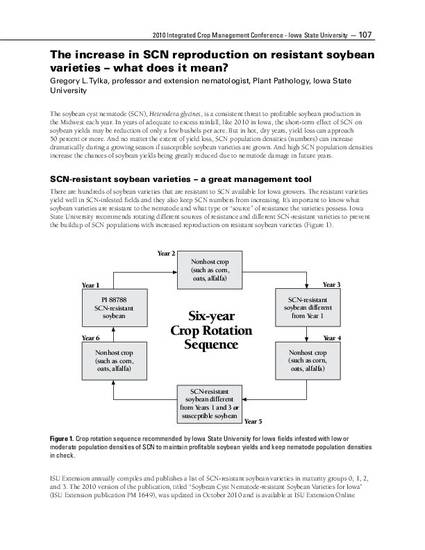
Presentation
The increase in SCN reproduction on resistant soybean varieties—what does it mean?
Proceedings of the Integrated Crop Management Conference
Start Date
1-12-2010 12:00 AM
Disciplines
Description
The soybean cyst nematode (SCN), Heterodera glycines, is a consistent threat to profitable soybean production in the Midwest each year. In years of adequate to excess rainfall, like 2010 in Iowa, the short-term effect of SCN on soybean yields may be reduction of only a few bushels per acre. But in hot, dry years, yield loss can approach 50 percent or more. And no matter the extent of yield loss, SCN population densities (numbers) can increase dramatically during a growing season if susceptible soybean varieties are grown. And high SCN population densities increase the chances of soybean yields being greatly reduced due to nematode damage in future years.
DOI
https://doi.org/10.31274/icm-180809-46
Citation Information
Gregory L. Tylka. "The increase in SCN reproduction on resistant soybean varieties—what does it mean?" (2010) Available at: http://works.bepress.com/gregory-tylka/209/
